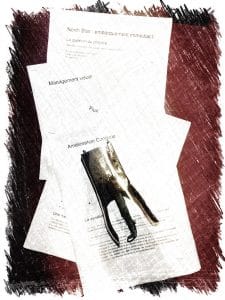Second article on the Boooksprint that took place at the end of 2016 with the Boooksquetaires Goood!.
Following the preparation phase where we defined scope, visual management and operating rules, here we go on PI #1! I will not describe here the content of the modules at the heart of Agile Rocket (Visual Management, Continuous Improvement, Flux and North Star), but rather their writing process. I suggest you follow the progress of the first (half) day of PI #1, from my perspective, as if you were there!
Ready for takeoff ? 😉
The Boooksprint article series:
- Boooksprint: boarding the Agile Rocket
- Booksprint: at the heart of PI # 1 (Part 1)
- Booksprint: at the heart of PI # 1 (Part 2)
- Booksprint: The Distributed Team Experience
- Booksprint: end of the adventure
Inspiration before you start

The end of Sprint 0 took us to lunchtime, the opportunity to get some fresh air before focusing. What could be better than the sea and the menhirs to recharge your batteries! The weather was lucky and the beauty of the landscape probably inspired us all: that's also the booksprint experience, getting out of the frame to encourage creativity! 😉
14.00 – Sprint planning
We had the full scope of PI #1, but what would we actually be able to achieve in 3 hours, the duration initially defined for our first sprint? I felt that we all wanted to go, but that we were still a little unclear on how to go about it.
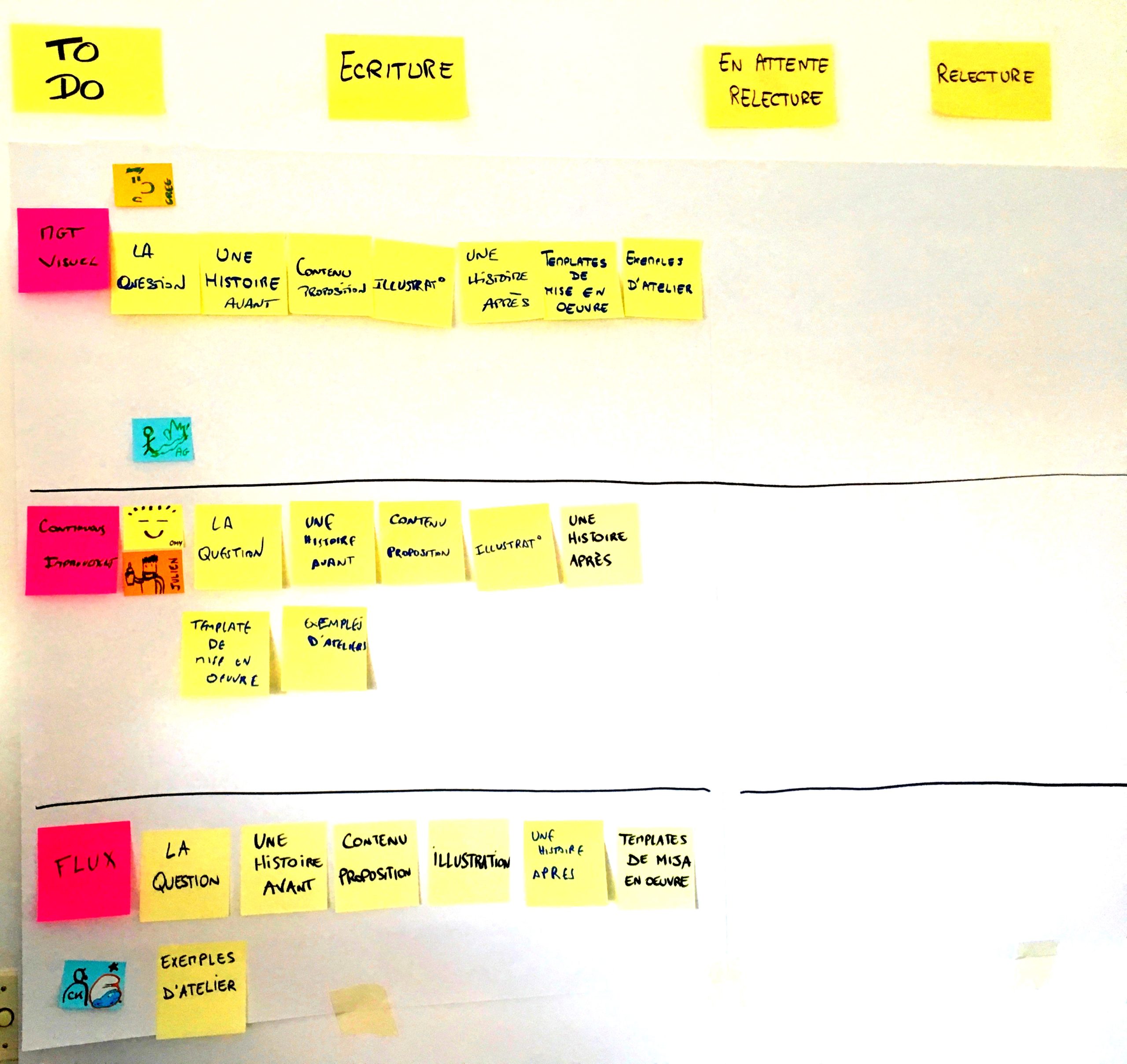
So we decided to form pairs to start:
- Arnaud and Grégory will take care of the module “Visual Management” : Arnaud has already been able to experiment with the module in a team and Grégory could bring him an outside perspective.
- Julien and I left on the module " Continuous improvement " : the structuring of continuous improvement approach is my subject of the moment, Julien will bring me his lights.
As for Christophe, he threw himself into the heart of the module " Flow " which we initially had less content on.
Each group then decides to work in different places before meeting at 3:30 p.m. for our mid-sprint stand-up!
14.15 – Clearing and asking questions
So we go to isolate ourselves with Julien to start writing. Our first step then consists in structuring our document based on the key elements of the chapter.
As a reminder :
- The question : summarizes the issue(s) addressed in the module
- A story before : introduction of the problem in the form of a story
- Content : description of the support proposal corresponding to the module
- artwork
- A story after : description of the benefits obtained after the accompaniment
- Implementation Templates : typical support process
- Examples of workshops : links to external sources describing the workshops offered
I propose to Julien to separate the work for us at first to be able to clear the ground a little bit:
- I start on my side in the game Content in order to ask the various subjects that I had in mind in writing.
- Julien, of a more creative nature than me, will start on the parts stories.
Christophe reminds us that content is already available on Google Drive and that our work should above all be about structuring information.
I then hasten to look for these supports in order to lean on them and indeed, it is a gold mine! Extension of visual management, evolutionary approach, continuous improvement protocol... I gradually insert the data that seems relevant to me, but I feel that something is wrong: Julien seems to have difficulty building the stories, -be because he knows the context of the module a little less well, which can limit his creativity. However, he proposes to me, in his reflection, to add a part “A Pendant story” allowing to have a finer granularity in the description of the accompaniment which I find very interesting! This shows the value and potential of ideas emerging from empiricism! 😉
However, we encounter a major problem: difficult to know which style of writing to adopt, whether for stories or for content. Should we stay in the narrative? Is the content a continuity of the story? Moreover, this module potentially arriving after the Visual Management module, should we make a link with it? It is with this set of questions that we finally arrive at Stand-up time: time flies very quickly! 🙂
15.30 – Stand-up: alignment search
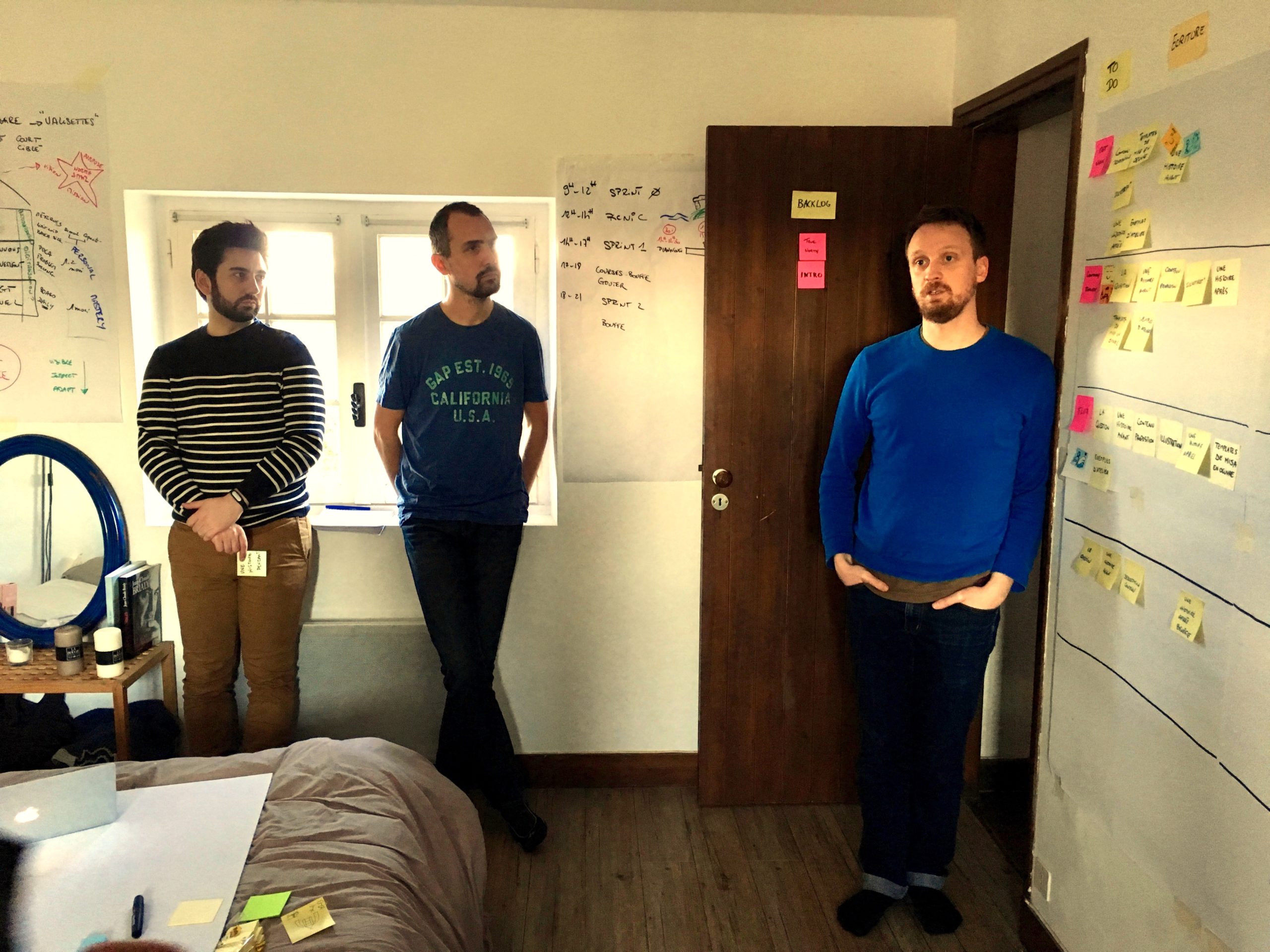
Our first Stand-up was one of the critical moments of the experience. This was from my perspective a concrete example of the Storming phase of the tuckman model :
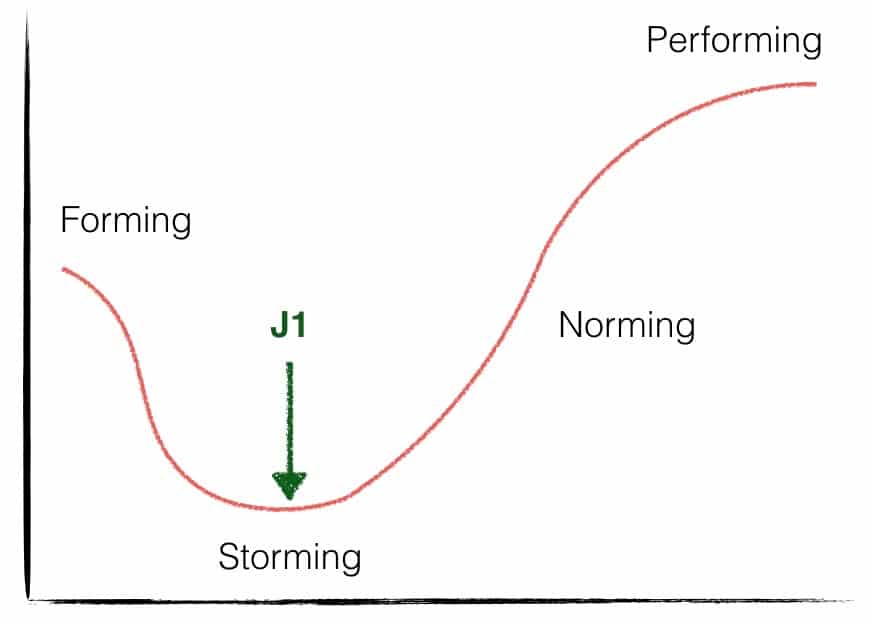
Members begin to share their feelings but still see each other as individuals
more than team members. There is a form of resistance and conflicts can arise.
Indeed, no one seemed to be able to find their place. Perhaps it was due to the heterogeneity of the level of knowledge of Agile Rocket or to this writing experience, probably new for most of us. Only Christophe had a more precise idea of what it should look like: his previous booksprint gave him a concrete reference on which to hang on and he tried his best to share it with us.
We thus discussed our strategies which turned out to be rather different:
- Arnaud and Grégory focused on the game History, working in pairs throughout. Their logic was that the rest would come out of history.
- On our side, we shared the effort. Our logic was to first pose the content and then contextualize it.
It was then clear that we did not have the same understanding of what to do. In addition, the doubt that hovered over the style of writing turned out to be shared and we did not manage to find something that spoke to everyone.
Christophe re-insisted on the fact that we should already have enough content on our Drive, the whole thing being to reorganize it to give it more body. It gave me personal comfort in the sense that I felt like we were headed in the right direction, all we needed was that little thing to get us aligned.
Christophe then proposed to put the priority on the group and to be "disturbable" if necessary. In other words, it will be more important to help the members of the team to be more autonomous on their subject rather than to advance on one's own. He will then act as the PO of the project, which seemed relevant to everyone.
Despite this, we could still feel a certain uneasiness when leaving the Stand-up, probably induced by a vagueness still too present in everyone's mind. Nevertheless, we all leave with the desire to do better, to meet again in less than an hour for the review and the retrospective.
Note: Our meeting lasted about 40 minutes, we encountered the difficulty of the teams to keep the synchronization time short. However, our planning phase having been particularly short and being at the very beginning of the project, this time seemed necessary to share our fears and doubts for the future.
16.10 – Writing
Back in our corner with Julien, we decide this time to proceed differently. We will go through the content together to fully immerse ourselves in it. In the end, it was very beneficial to us because the various subjects led to interesting exchanges around our practices in the field and on how we could make continuous improvement more relevant for the teams: what luck, it is precisely the subject of our mod! 😉
We then focused together on the part Content, at the heart of the module, to flatten the global perimeter that we considered relevant to mention. Then Julien went on a phase of proofreading from the top of the document while I continued to feed the bottom of the document: iterative and incremental, isn't it? 😛
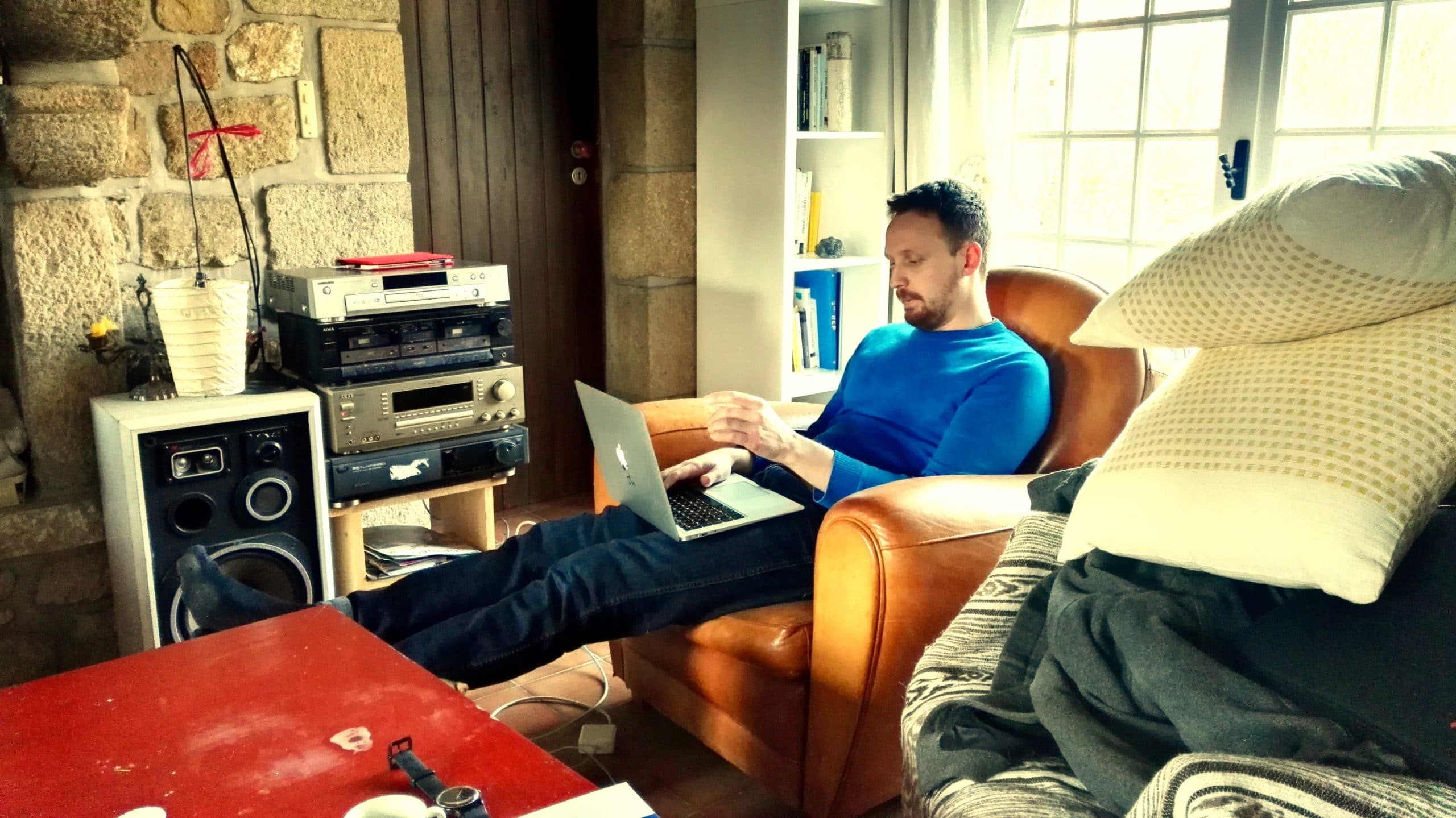
A few minutes before the next synchronization point, I went to see Arnaud and Grégory to see how things were going on their side. They had also decided to change their strategy to work individually longer this time around. Like what, the previous stand-up gave us ideas for experimentation: we need to learn how we work as a team (or in pairs in this case) to find the combination and the rhythm that suits us!
17.00 – Review
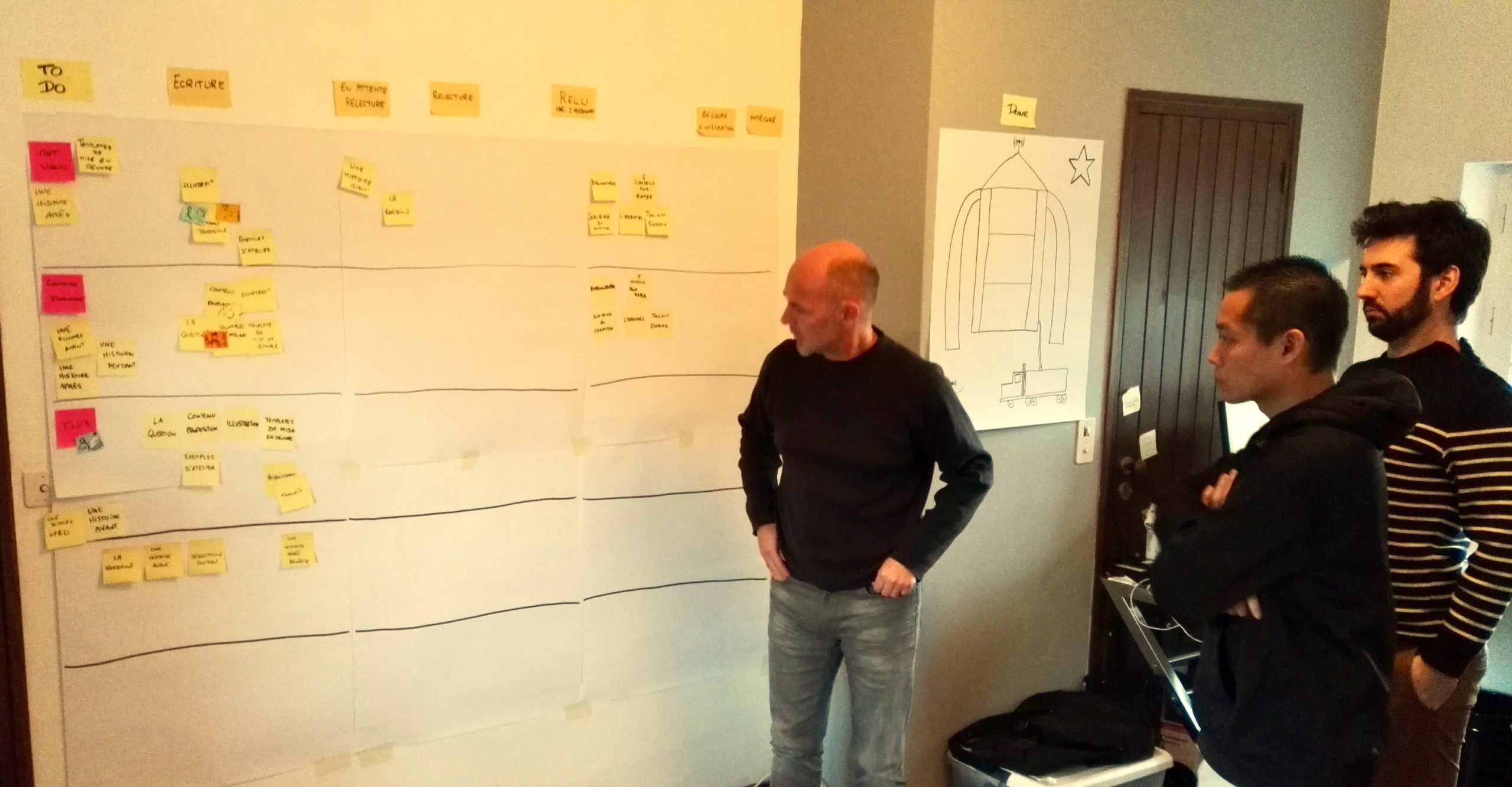
The sprint review was quite quick. We simply updated the Visual Management and shared what we had been able to accomplish since the Stand-up. Each group had been able to advance on its part but no one had a real overall vision, except perhaps Christophe who had been able to gravitate a little bit in the groups.
Now, the observation was simple: we were still having trouble finding our bearings, structuring our writing and therefore finding a rhythm. We couldn't finish what we started!
17.15 – Retrospective
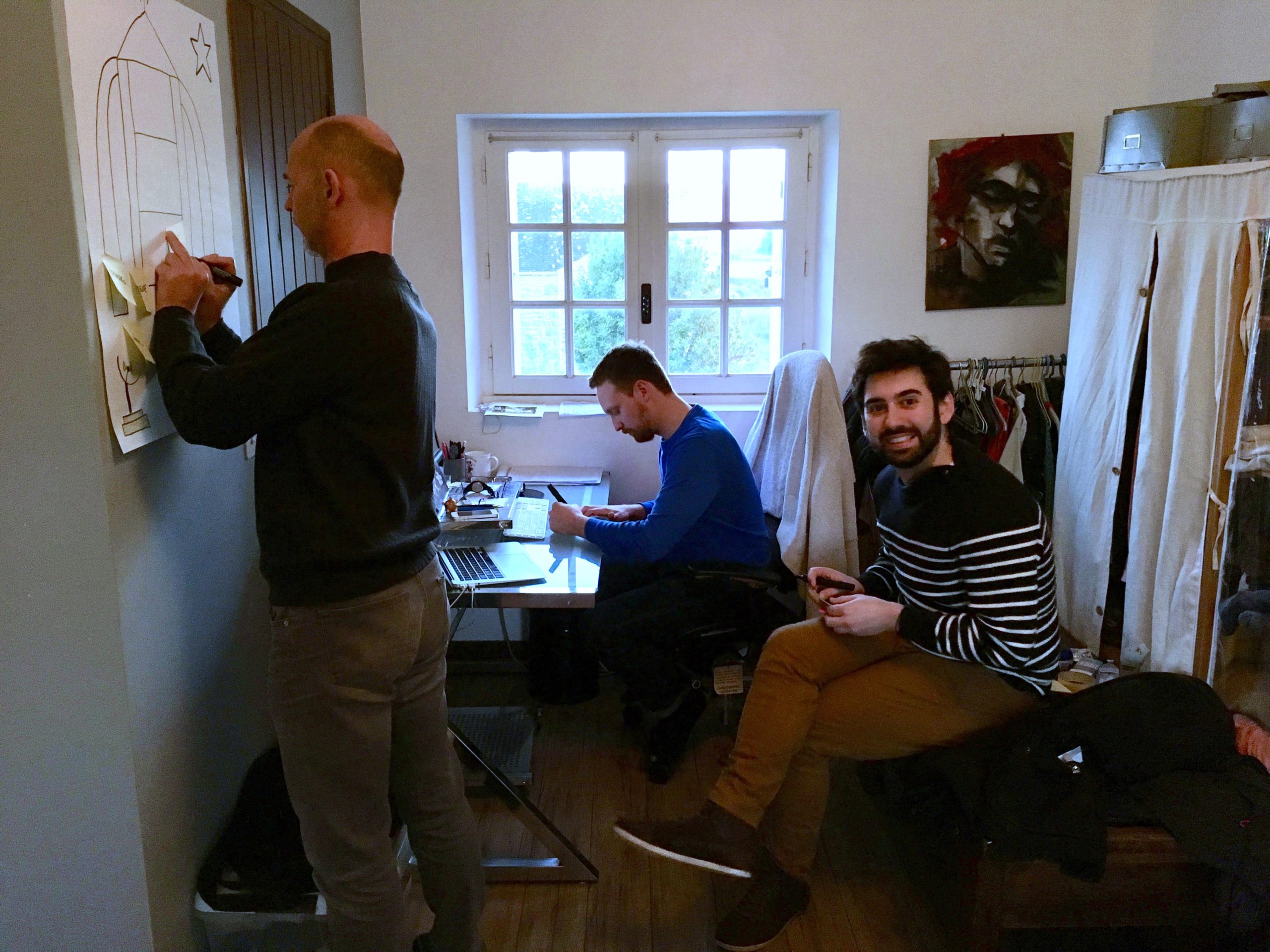
For this very first retrospective, I had the honor of being the designated volunteer facilitator! What a team spirit, isn't it? 😛
For the sake of efficiency, I proposed to start with a binary retrospective format:
- “What works? » : to capitalize on our learning as soon as possible
- “What are we changing? » : to share everyone's challenges and take rapid improvement actions
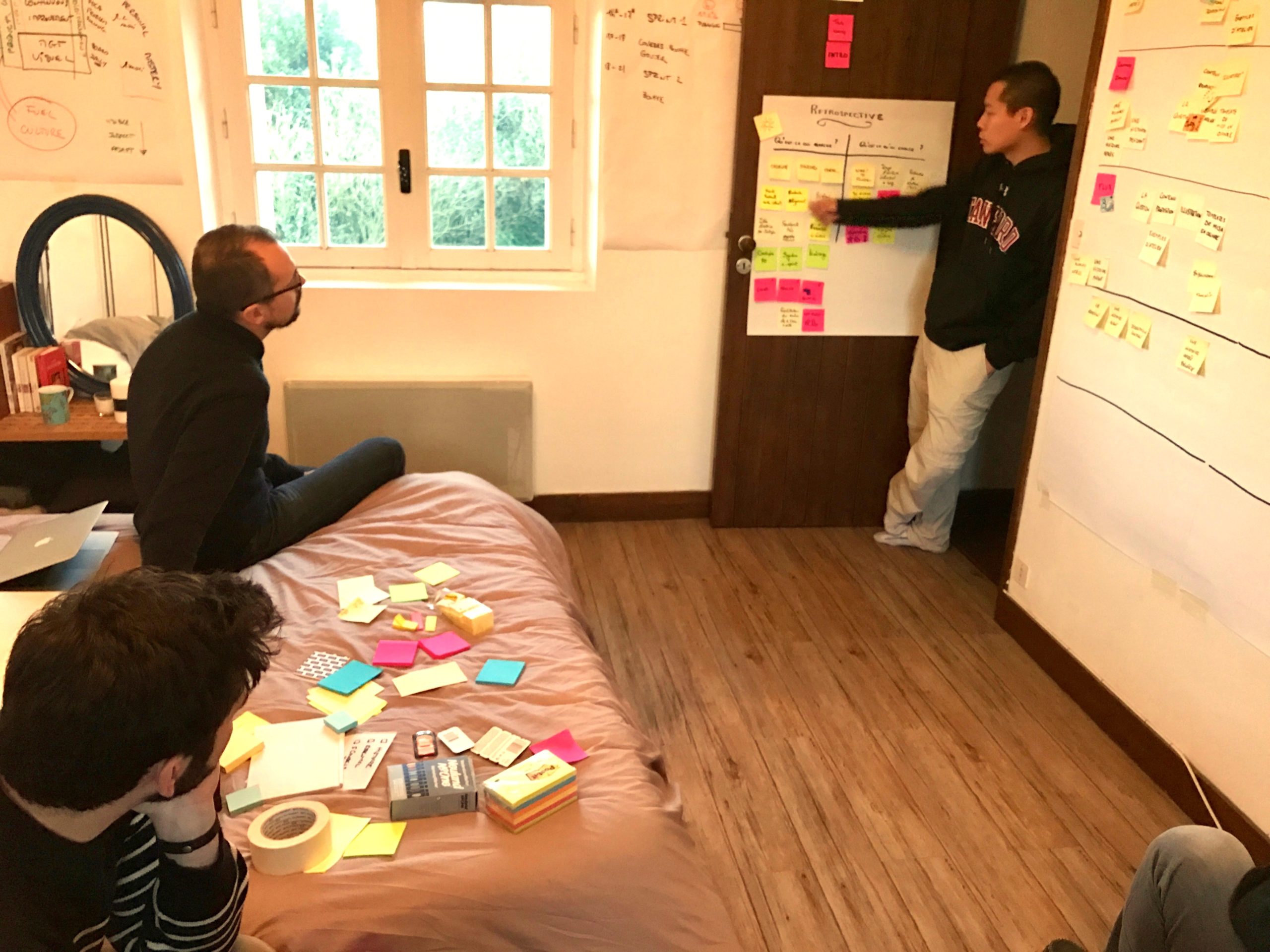
After 5 minutes of individual reflection, we were able to debrief all together. Here are the results obtained:

What works :
- THE regular synchronization points help us a lot, especially at the start of this project full of uncertainties
- THE pairing has great value for co-writing, rereading and opening up the field of possibilities
- Christophe's posture as PO is necessary to align us with the objective – which is, in my feeling at the moment, clear only to him
What we need to change :
- start to finish – We probably scattered over too many subjects at the same time: history, content, templates... we would have to focus on parts to be able to validate them
- Find a suitable writing time – they seemed a bit short to some. Indeed, the time to get started, we arrived at the point of synchronization that emerged from the subject.
17.45 – Races and we continue!
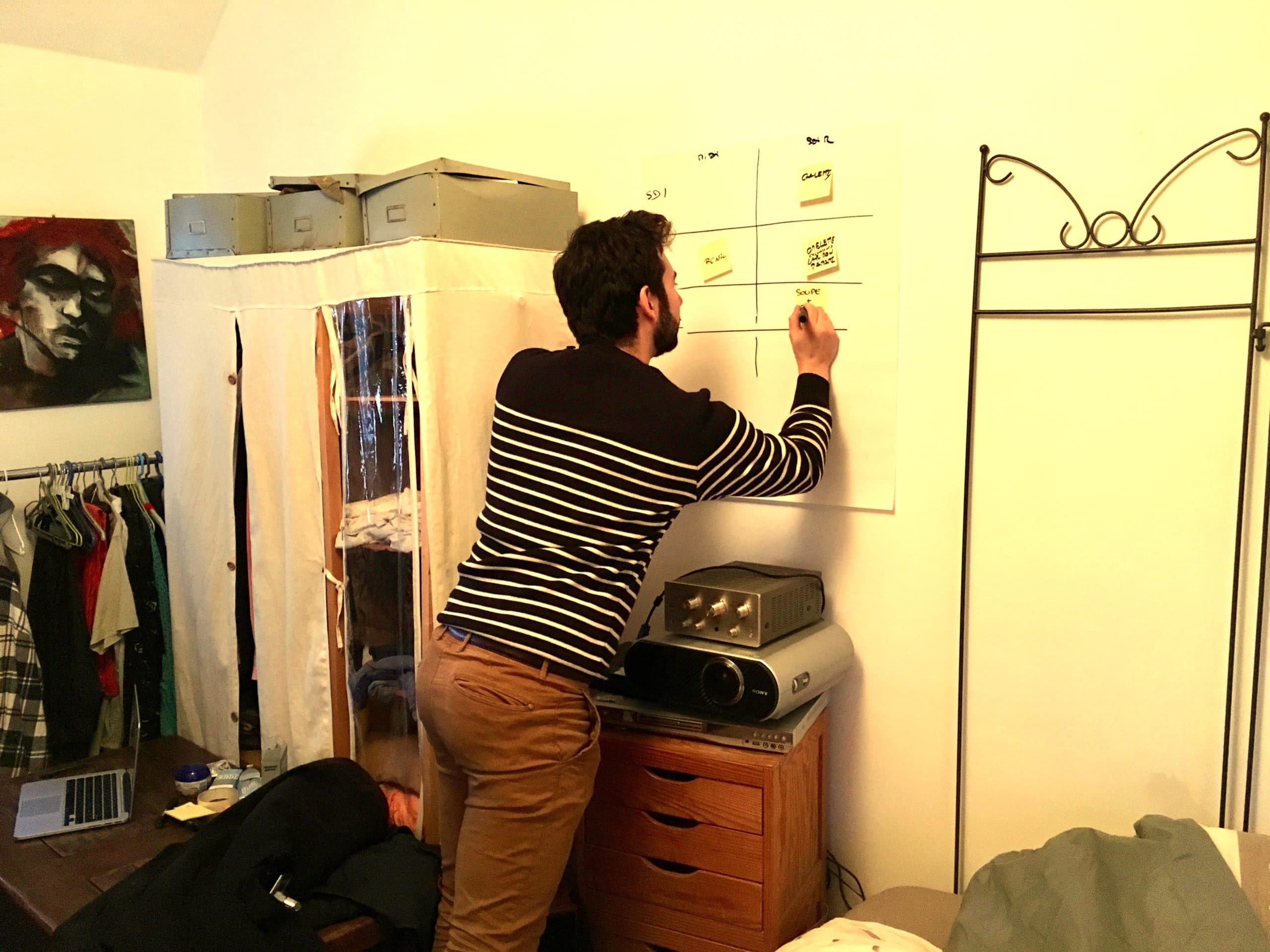
However, it is not necessary that we all go there, Christophe, Arnaud and I therefore decide to stay to continue our momentum.
The calm of the house was rather beneficial: the opportunity to implement elements of the retrospective such as finishing what we started. I take this opportunity to complete the content from the media on which we relied. We will be able to work on it more freely with Julien when he comes back.
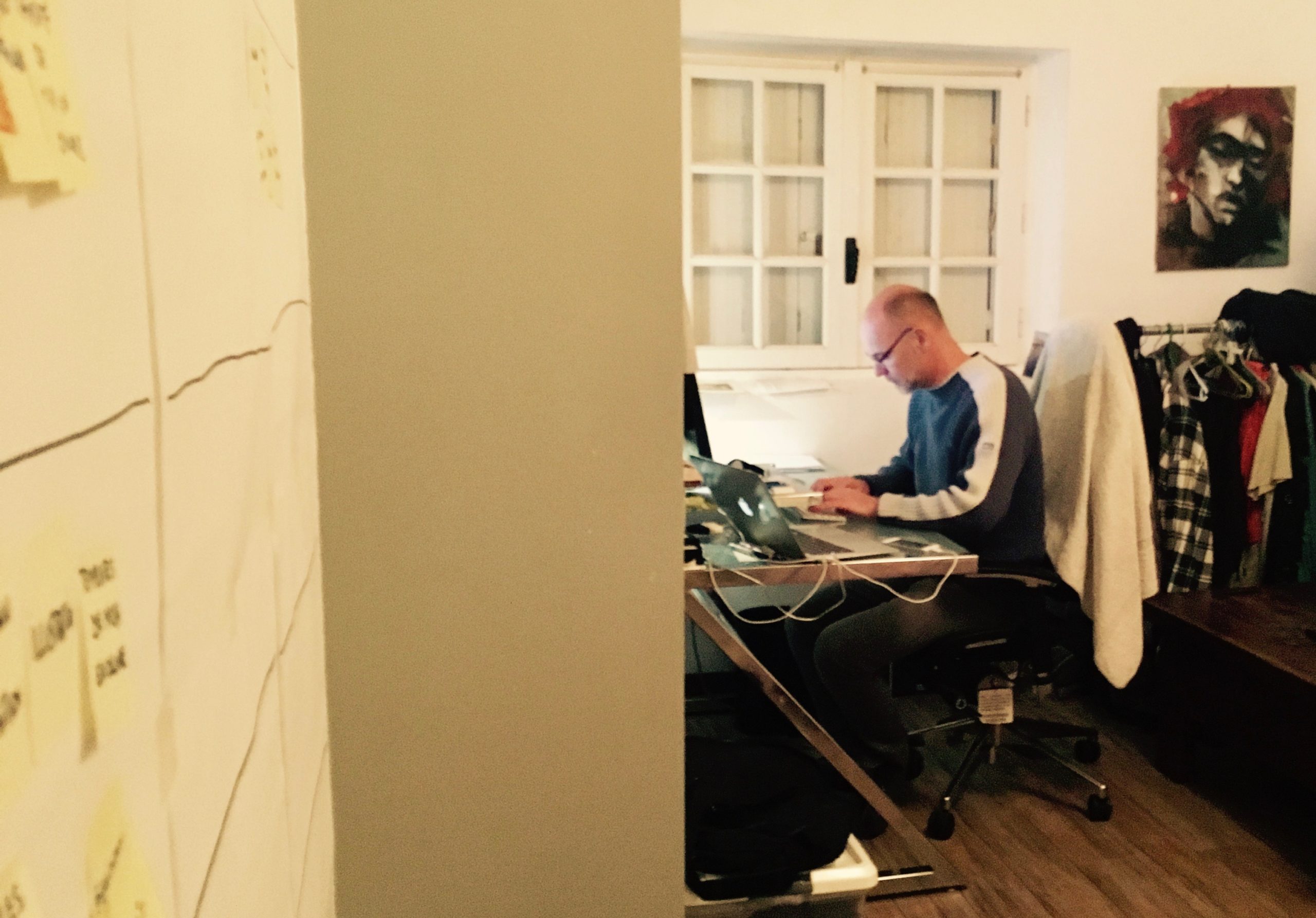
For his part, Christophe takes the opportunity to complete the Flux module that he had left aside to be able to guide and direct each of the groups in their writing.
19.00 – Writing
Back from the races, the team meets to set off again. We decide this time to embark on a one-hour sprint (from 7.15 to 8.15) with 15 minutes of synchronization at the end. This will allow us to put our production capacity of the day and project ourselves on the next one which involves a landing: the integration of our first increment!
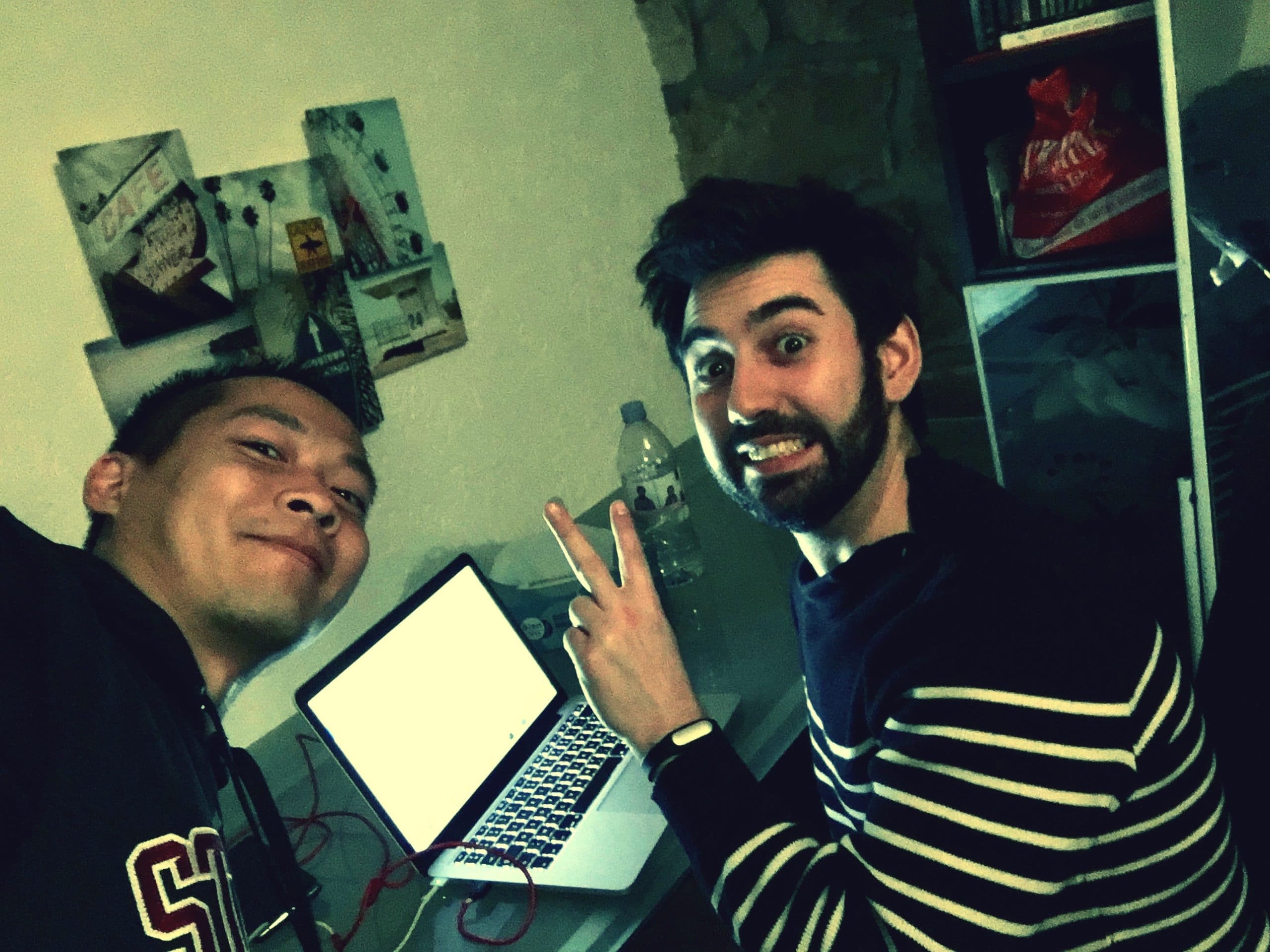
Let's go with Julien, motivated to have something that suits us at the end of the day! Following my work on the content, we then pair up on the structure and ordering of the different subjects with each other. Indeed, having deposited a certain quantity of elements one after the other, I gradually ended up losing the common thread: the contribution of my partner was then enormous at this time to make the reading more fluid and more coherent.
Julien therefore used his synthetic skills to reorganize the content, while relying on me to understand certain subtleties. We added a bit of context based on what Grégory and Arnaud had done in their module. And yes, we have started looking around to ensure general consistency both in terms of structure and style! 🙂
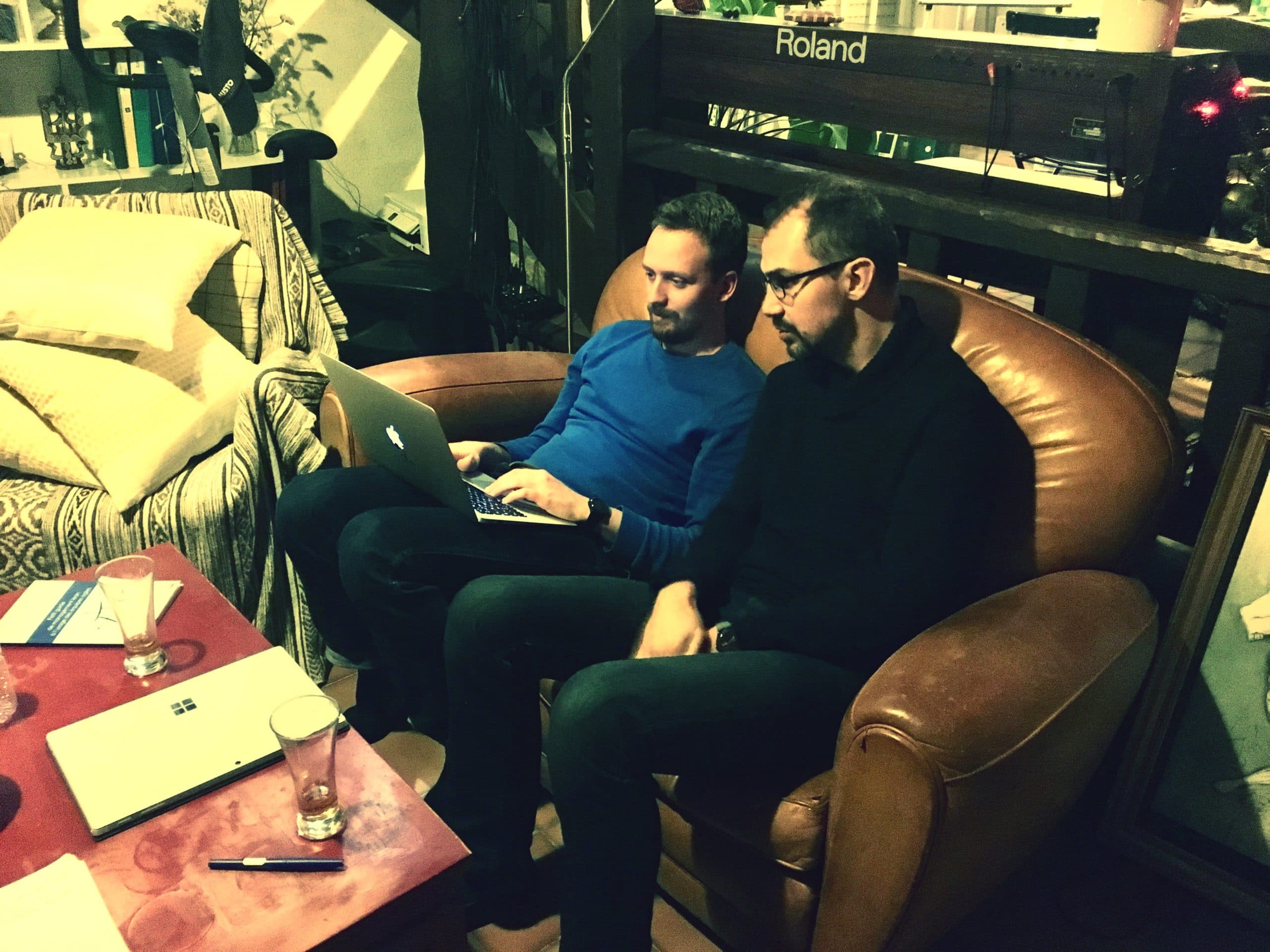
A short passage to our colleagues from Visual Management: they left in pairs and are starting to give substance to their module! 😉
21.00 – Review and retrospective
Our review / retrospective couple is going rather quickly knowing that the synchronization points were very close from the start. Now, by evoking the different themes, we realize that there may be arrangements to be made: certain subjects dealt with in the Continuous Improvement part such as the implementation follow-up where the Daily Meeting Protocol will have to be moved to the Visual Management section.
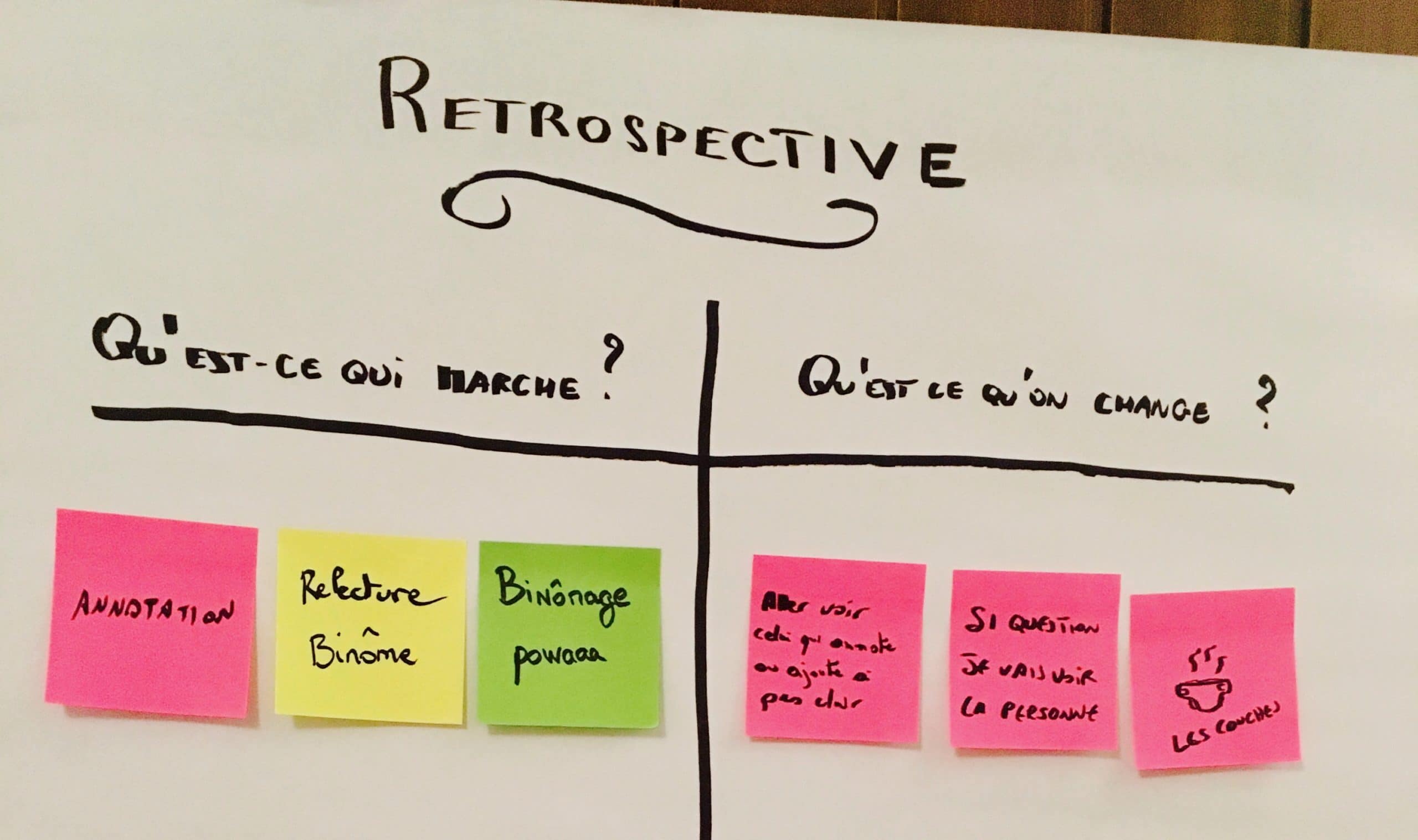
The elements that begin to emerge are of the order of organization.
What works :
- THE annotation principle in our documents whether for oneself or by other team members
- The work in pair remains a safe bet
What we need to change :
- Go directly to people if we have a question
Note: Isn't it interesting to see that we tend to reproduce the usual patterns of teams when we are less than 5m from each other? Individuals and interactions, that's what we had to keep in mind! 😉
Learnings
In this first part of PI, we let's learn to work together :
- We are looking for a team alignment by frequent synchronization points. This allows us to inspect and adapt our process accordingly
- THE pair work helps us take a step back and work together better
- Christophe's role as PO is essential to guarantee homogeneity of content and sharing of the project vision
Things are slowly falling into place, but we still can't finish what we're starting. We are going to have to organize ourselves better to be able to reach our goal of delivering the PI#1 tomorrow evening! 😉
To be continued in the next episode, Boooksprint: at the heart of PI#1 (Part 2).

